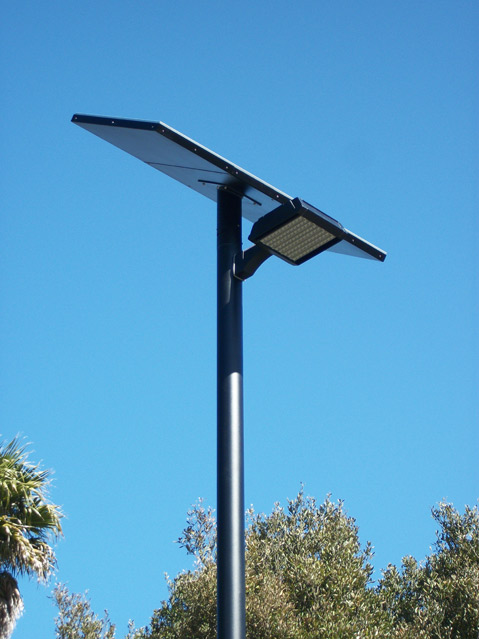New Sustainable High Tech Lighting at Arroyo Burro Beach County Park
Santa Barbara County Parks has taken another step toward energy sustainability with new solar/LED lighting at the outer parking lot at Arroyo Burro Beach County Park. County Parks staff recently installed the new lighting to provide focused area illumination at the previously dark lot as a safety improvement.
The lighting is comprised of off-the-grid self contained, solar powered and self calibrating units that provide the desired level of lighting through the different hours of the night. Anticipated savings in costs for electric power is an added benefit to this type of lighting system.
“These new lights provide for improved safety in the parking lot of Arroyo Burro Beach,” said Second District Supervisor Janet Wolf. “In addition, the solar recharging nature of these lights will save the County on energy costs and is an eco-friendly approach to providing this feature.”

Not only are the lights energy efficient and sustainable, they are also “night sky compliant.” This means that they are rated not to contribute to nighttime light pollution. In fact, the astronomy program at theSanta Barbara Museum of Natural History reviewed the lighting specs and endorsed these lights for that reason.
Arroyo Burro Beach’s new parking lot lighting employs a solar panel that acts as a photo cell. The lower half of the structure contains 8 gel-type batteries that are rated to last for 40 hours per charge. It takes approximately six hours of sunlight to recharge the battery pack. Controllers in the unit not only regulate charging (to avoid over charging) but will also shut the lights off if for some reason the batteries are under powering the light.
After about 5 to 7 days of use, the system will self-calibrate to the season, sensing when the lights should be on. The lights are set to come on at dark, dim in the middle of the night, and return to full illumination in the early morning, shutting off at sunrise. This pattern is self adjusting to changes in light and dark times throughout the year.
The LED lights are expected to last for 60,000 hours — a life span of 15 to 18 years of average use.
Because no wiring had to be installed from a new power source and no new service connection was required from Southern California Edison, the system proved less expensive to install than traditional hardwired lights
